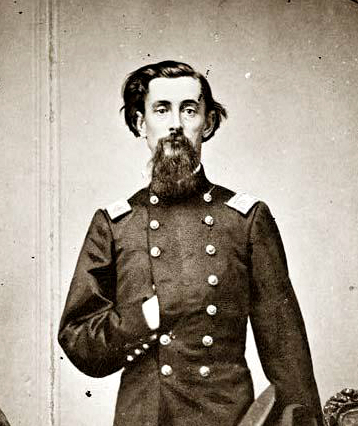Introduction
Born in Wallingford, Connecticut, Henry Beebe Carrington (1824–1912) was a brigadier general in the US Army during the Civil War. Carrington received a law degree from Yale Law School in 1847 and for a time practiced law in Ohio. He became a leader in the fledgling Republican Party and, in 1857, served on the committee that eventually was responsible for the organization of the national Party. When the Civil War began, Carrington became a colonel—and, later, brigadier general—in the army, serving for the latter part of the war against the Sioux Indians out West. In one of these battles he was wounded and as a result transferred to Wabash College to teach military science. As a professor, he published several books, including Beacon Lights of Patriotism (1894) and Washington the Soldier (1898). Prior to retirement, he worked for the federal government helping to craft treaties with Indian tribes.
1748. Surveyor of lands at sixteen years of age.
1751. Military inspector and major at nineteen years of age.
1752. Adjutant-general of Virginia.
1753. Commissioner to the French.
1754. Colonel, and commanding the Virginia militia.
1755. Aide-de-camp to Braddock in his campaign.
1755. Again commands the Virginia troops.
1758. Resigns his commission.
1759. January 6. Married.
1759. Elected member of Virginia House of Burgesses.
1765. Commissioner to settle military accounts.
1774. In First Continental Congress.
1775. In Second Continental Congress.
1775. June 15. Elected commander-in-chief.
1775. July 2. In command at Cambridge.
1776. March 17. Expels the British from Boston.
1776. August 27. Battle of Long Island.
1776. August 29. Masterly retreat to New York.
1776. September 15. Gallant, at Kipp’s Bay.
1776. October 27. Battle of Harlem Heights.
1776. October 29. Battle near White Plains.
1776. November 15. Enters New Jersey.
1776. December 5. Occupies right bank of the Delaware.
1776. December 12. Clothed with “full power.”
1776. December 14. Plans an offensive campaign.
1776. December 26. Battle of Trenton.
1777. January 3. Battle of Princeton.
1777. July. British driven from New Jersey, during.
1777. July 13. Marches for Philadelphia.
1777. September 11. Battle of Brandywine.
1777. September 15. Offers battle at West Chester.
1777. October 4. Battle of Germantown.
1778. Winters at Valley Forge.
1778. June 28. Battle of Monmouth.
1778. British again retire from New Jersey.
1778. Again at White Plains.
1779. At Middlebrook, New Jersey, and New Windsor.
1780. Winters at Morristown, New Jersey.
1781. Confers with Rochambeau as to plans.
1781. Threatens New York in June and July.
1781. Joins Lafayette before Yorktown.
1781. October 19. Surrender of Cornwallis.
1783. November 2. Farewell to the army.
1733. November 25. Occupies New York.
1783. December 4. Parts with his officers.
1783. December 23. Resigns his commission.
1787. Presides at Constitutional Convention.
1789. March 4. Elected President of the United States.
1789. April 30. Inaugurated at New York.
1793. March 4. Re-elected for four years.
1796. September 17. Farewell to the people.
1797. March 4. Retires to private life.
1798. July 3. Appointed commander-in-chief.
1799. December 14. Died at Mount Vernon.
Return to The Meaning of George Washington's Birthday.



Post a Comment